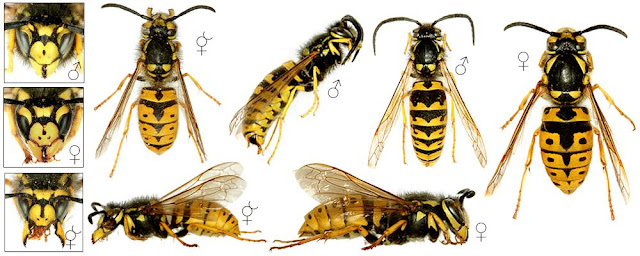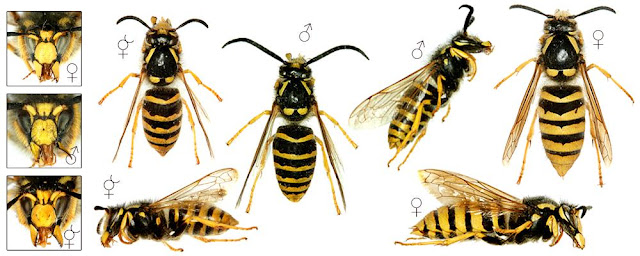There are several different species that account for what we might think of as "common" wasps. They are not all that easy to tell apart, especially when they are flying round the garden. Proper identification requires a good view of the markings on the face, thorax and abdomen and is usually possible with good photographs.
This one is a common wasp (Vespula vulgaris) in the garden this week.
This is the Bees, Wasps and Ants Recording Society (BWARS) identification chart for Vespula vulgaris.
The other very common social wasp found in the garden is the German wasp, Vespula germanica. These are German queen wasps at rest.
This is the BWARS chart for Vespula germanica.
A third common and widespread wasp is the tree wasp, Dolichovespula sylvestris.
I could get a good view of the face of this one which shows the typical features of Dolichovespula sylvestris.

This is the BWARS chart for Dolichovespula sylvestris.
Another very good source of information on wasp identification is www.eakringbirds.com here.
Earlier in the year social wasps are mainly carnivorous but at this time of year they develop a sweet tooth and can be a pest. They attack bee hives, trying to steal the honey. They are also keen on my apples.
This Vespula vulgaris is wiping the juice off its antennae with its front legs.
There seems to be a pecking order on the apples as the wasps chase away the butterflies and the butterflies scare away the flies.
Pretty soon now all the worker wasps will be dead and the new queens will go into hibernation, waiting to emerge next spring to establish new colonies.




















No comments:
Post a Comment